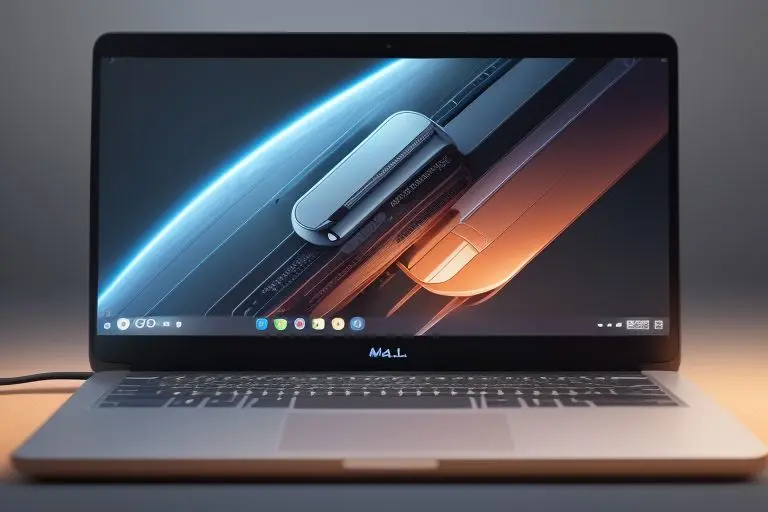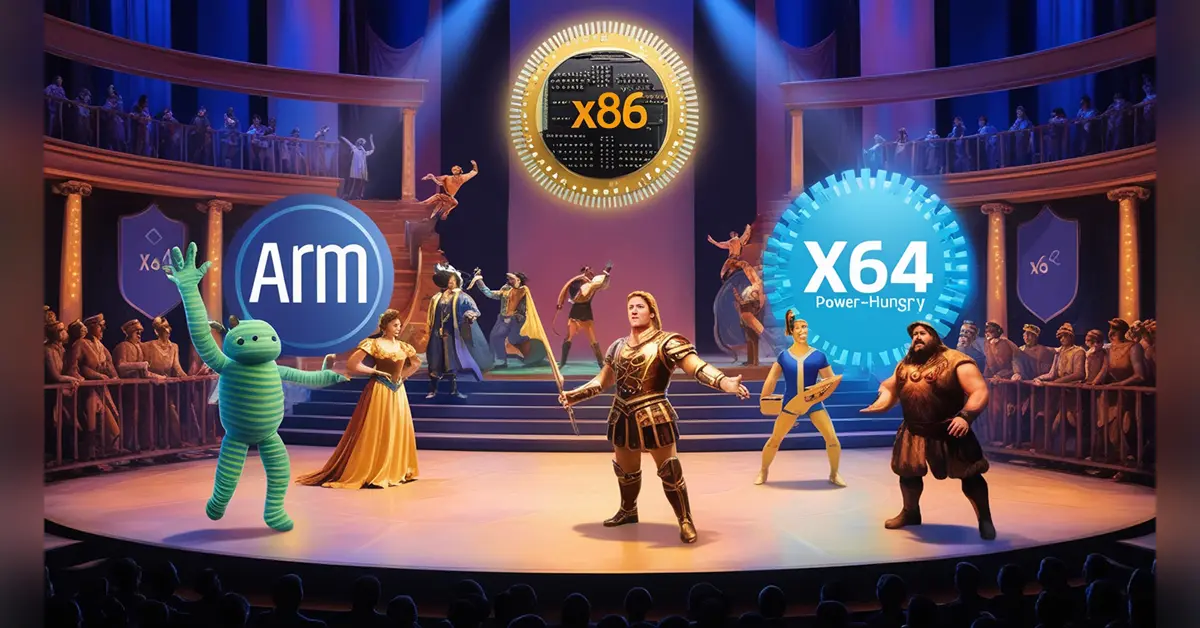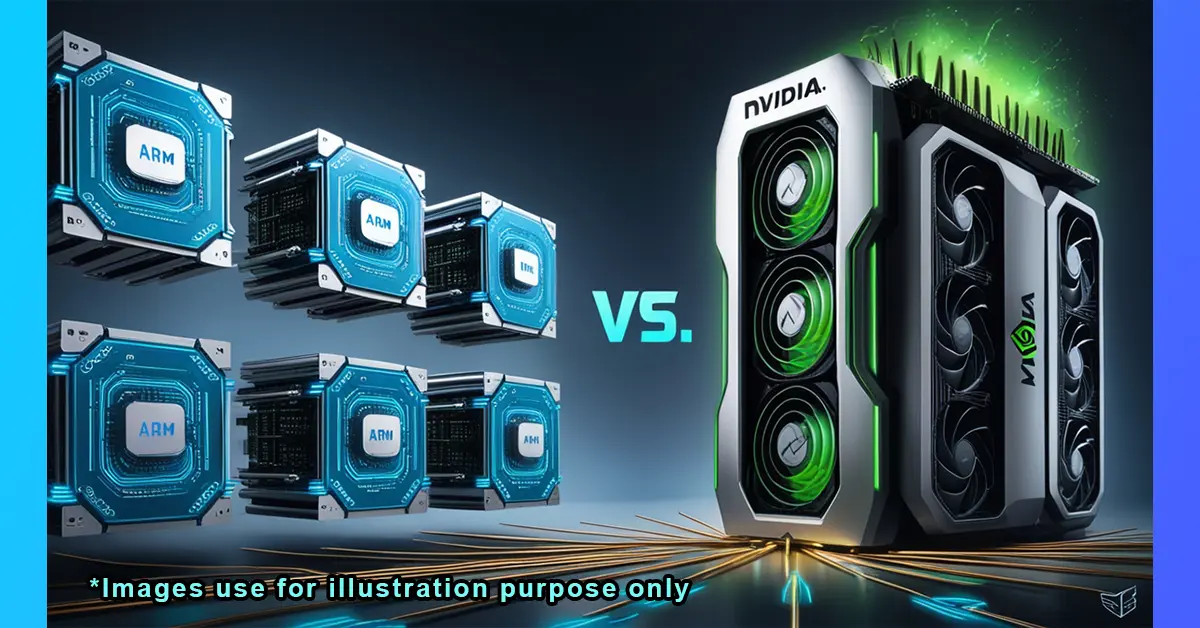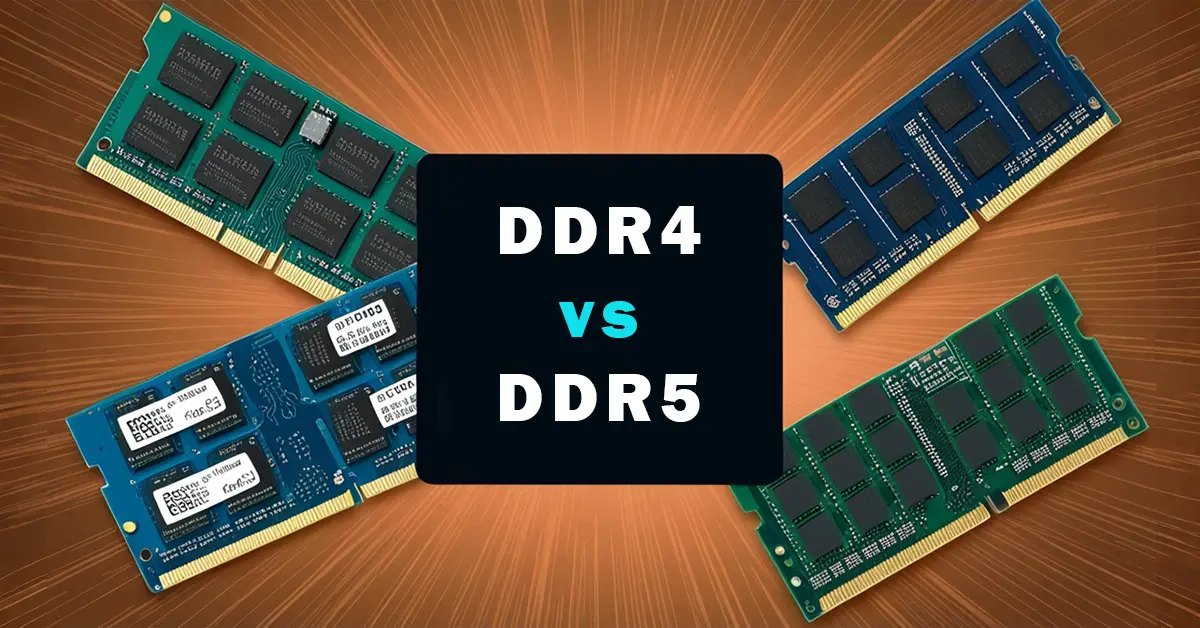Table of Contents
In the world of computing, one debate reigns supreme: Is Arm better than x64 and x86? This question sparks discussions from casual tech enthusiasts to seasoned developers. Each architecture has its unique strengths and weaknesses, catering to different needs and applications. So, let’s dive into this topic and dissect it piece by piece, like peeling an onion.
Understanding CPU Architectures
What Is a CPU Architecture?
A CPU architecture is the blueprint that dictates how a computer’s processor handles tasks. It’s like the instruction manual for your processor, outlining how it should operate, communicate with memory, and execute commands.
A Brief History of CPU Architectures
- x86 Architecture: Developed by Intel in the late 1970s, x86 has been the backbone of personal computing for decades. Its roots trace back to the Intel 8086 processor.
- x64 Architecture: Also known as x86-64, this is an extension of x86, introduced by AMD in the early 2000s. It allows for more memory addressing and better performance.
- Arm Architecture: Arm, standing for Advanced RISC Machines, is a different beast altogether. It emerged in the 1980s, focusing on energy efficiency and simplicity.
Arm vs. x64 vs. x86: The Core Differences
Instruction Set Architecture (ISA)
- x86 and x64: These architectures use a Complex Instruction Set Computer (CISC) approach, meaning they have a broad set of instructions that can execute complex tasks in a single instruction.
- Arm: Arm employs a Reduced Instruction Set Computer (RISC) approach, featuring a smaller set of instructions that are designed to execute very quickly.
Power Efficiency
Arm’s RISC architecture makes it incredibly power-efficient. That’s why you see Arm processors in most smartphones and tablets—they can deliver good performance without draining the battery. On the flip side, x86 and x64 processors are typically found in desktops and laptops where power consumption isn’t as critical.
Performance
When it comes to raw performance, x86 and x64 processors often have the upper hand, especially in high-performance computing tasks. They can handle complex instructions and heavy computational loads more efficiently than their Arm counterparts.
Arm: The Lightweight Champion

Mobile and Embedded Systems
Arm processors dominate the mobile and embedded systems market. Their energy efficiency and compact design make them perfect for devices where battery life and heat dissipation are critical concerns.
Scalability
Arm has made significant strides in scalability, moving from low-power devices to powerful servers. The introduction of Arm-based servers shows that Arm isn’t just for smartphones anymore.
Ecosystem and Compatibility
The Arm ecosystem is vast, with countless devices and applications optimized for its architecture. However, transitioning from an x86 or x64 environment to Arm can pose compatibility challenges, as not all software is natively supported on Arm.
x64: The Powerhouse

Desktop and Laptop Dominance
x64 processors rule the roost when it comes to desktops and laptops. Their ability to handle large amounts of memory and execute complex tasks makes them ideal for everyday computing and professional workloads.
Server and Datacenter Applications
In the realm of servers and data centers, x64 processors are the go-to choice. Their performance and reliability are unmatched, making them the backbone of enterprise-level computing.
Software Compatibility
One of the biggest strengths of x64 is its software compatibility. A vast majority of software applications are designed and optimized for x64, ensuring seamless performance across various platforms.
x86: The Old Guard
Legacy Systems
x86 architecture, while somewhat outdated, still holds a significant presence in legacy systems. Many older applications and systems are built on x86, and upgrading them to newer architectures can be costly and complex.
Embedded Systems
Despite its age, x86 is still used in some embedded systems where its performance and compatibility are required. However, it’s gradually being replaced by more efficient Arm processors in many applications.
The Battle of Ecosystems
Software and Development Tools
- x64 and x86: The development ecosystem for x64 and x86 is mature, with a plethora of tools, compilers, and libraries available. Developers have been working with these architectures for decades, resulting in a robust and well-documented ecosystem.
- Arm: The Arm ecosystem is growing rapidly, with more development tools and software support being introduced regularly. However, it still lags behind x64 and x86 in terms of the breadth and depth of available resources.
Operating Systems
- Windows and Linux: Both Windows and Linux have extensive support for x64 and x86 architectures. While Windows has made strides in supporting Arm, it’s still not as seamless as its support for x64.
- MacOS: Apple’s transition to Arm with its M1 chips marks a significant shift. MacOS now supports Arm natively, demonstrating impressive performance and power efficiency gains.
Arm in the Future

The Rise of Arm-Based Laptops
With the success of Apple’s M1 chips, other manufacturers are exploring Arm-based laptops. These devices promise longer battery life and comparable performance to their x64 counterparts, challenging the status quo of personal computing.
Arm in the Cloud
Cloud providers are beginning to adopt Arm-based servers, attracted by their energy efficiency and cost savings. This shift could lead to more widespread adoption of Arm in data centers, potentially changing the landscape of cloud computing.
IoT and Edge Computing
Arm’s dominance in IoT and edge computing is expected to continue growing. Its low power consumption and scalability make it ideal for these applications, where efficiency and connectivity are paramount.
Challenges for Arm

Compatibility Issues
One of the biggest hurdles for Arm is software compatibility. While many applications are being ported to Arm, there’s still a significant gap compared to the vast library of software available for x64 and x86.
Performance Parity
Achieving performance parity with x64 in high-end computing tasks remains a challenge for Arm. While Arm has made impressive strides, there’s still a performance gap in certain applications that rely heavily on complex computations.
Market Penetration
Breaking into markets dominated by x64 and x86 requires significant investment and convincing enterprise clients to make the switch. This is no small feat, given the entrenched position of x64 in many industries.
Conclusion
So, is Arm better than x64 and x86? The answer, like many things in tech, is: it depends. Arm excels in power efficiency, making it ideal for mobile and embedded systems. x64 shines in performance-heavy tasks, dominating desktops, laptops, and servers. x86, while older, still holds its ground in legacy and some embedded systems.
Ultimately, the best choice depends on your specific needs and use case. As technology evolves, we may see more convergence between these architectures, with Arm closing the performance gap and x64/x86 becoming more power-efficient.
FAQs
Why is Arm more power-efficient than x64 and x86?
Arm uses a RISC architecture with a smaller set of instructions, allowing for faster execution and lower power consumption. This design is inherently more efficient than the CISC architecture used by x64 and x86.
Can I run x64 software on an Arm processor?
Running x64 software on an Arm processor typically requires emulation or compatibility layers, which can impact performance. Some applications are being natively ported to Arm, improving compatibility.
Are Arm-based laptops as powerful as x64 laptops?
Arm-based laptops, like those with Apple’s M1 chips, have shown impressive performance and power efficiency. While they may not yet match the highest-end x64 laptops in all tasks, they are closing the gap rapidly.
What are the main use cases for x86 architecture today?
x86 is primarily used in legacy systems and some embedded applications. It continues to be relevant in scenarios where upgrading to newer architectures is not feasible or cost-effective.
Will Arm eventually replace x64 and x86?
It’s unlikely that Arm will completely replace x64 and x86, as each architecture has its strengths. However, Arm’s growing presence in various markets suggests it will continue to gain ground, potentially leading to more balanced competition.



